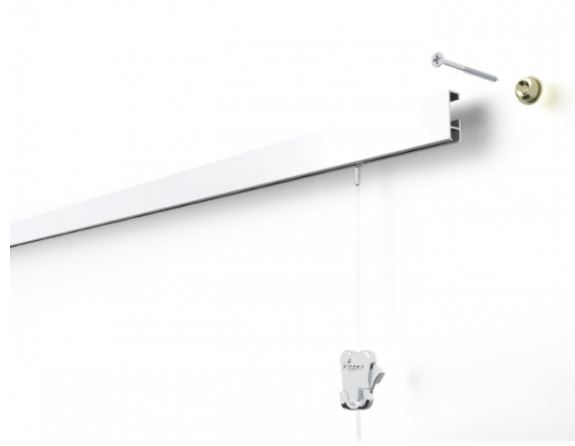1. How to choose a painting for your wall?
To begin, consider the type of paintings that appeal to you. Are you drawn to abstract art, where recognizable objects are not depicted and the focus is on dynamics, composition, and the interplay of colors? When selecting abstract paintings, think about which color tones would best suit your home – bold colors, pastel shades, or tones based on light-dark or color contrasts.
Alternatively, you may prefer representational art, where the painting features recognizable objects such as people, animals, birds, or landscapes. This could be a precise realistic style or an impressionistic one, emphasizing mood and light.
It's important to consider the placement of the painting. Will it be in the dining room, living room, children's room, or bedroom? For bedrooms and children's rooms, a calmer theme with pastel and softer colors is recommended. In the living room, however, you might want something more vibrant and livelier. If the living room serves as a space for relaxation, a painting with a calming mood, such as a nature scene, could be preferable.
For those with a Scandinavian-style home, adding a vibrant accent in the living room, such as a contrasting abstract painting or a colorful nature painting, can be ideal. Glazed and matted pastel or watercolor paintings also complement a Scandinavian-style home, harmonizing well with other framed photos or graphic prints and creating a pleasant and varied composition.
Acrylic and oil paintings, whether framed or not, generally require a bit more space around them and fit well in both modern homes and classic or antique styles, especially when paired with antique furniture.
Ultimately, choosing a painting is a matter of personal feeling. If a painting truly resonates with you and captivates your attention, you will instinctively know that it's "the one" and will find the perfect place for it in your home.
2. What is the ideal size?
If a painting is too small for a large wall, it can appear lost or insignificant. On the other hand, if a painting is too large for a small wall, it can feel overwhelming and dominate the space.
In the case of a too small painting and a wall with a large spread, the painting "sinks" into the wall and vice versa. A painting that is too big for a small wall feels oppressive.
For a large wall space, you might want to consider either a large acrylic or oil painting or a grouping of smaller pastels, watercolors, or small acrylics. This approach creates a visually engaging effect and allows you to rearrange the paintings within the group from time to time, creating a fresh atmosphere. Of course, the specific mounting methods for the paintings will need to be considered, and I will discuss them in more detail below.
3. What should you consider regarding lighting?
When choosing a painting, it's important to consider the lighting in the room where it will be displayed. If you have a darker wall that doesn't receive much daylight and lacks wall lamps, such as walls above stairs or in an entryway, it's better to choose paintings in lighter colors. Ideally, each painting would have its own dedicated lighting, but this can be a complex and time-consuming task. Additionally, if you enjoy occasionally rearranging the paintings on your walls, individual wall spotlights for each painting might limit your flexibility rather than enhance it.
Nõuandeid, kuidas maali seinale valida:
www.kuidas.ee/871/kuidas-valida-seinale-maali
www.sisustusweb.ee/ee/nipid/2946/millist-kunsti-valida-oma-elutoa-seinale.html
www.thespruce.com/choosing-artwork-by-room-4155124
- Furthermore, Mark Kostabi has expressed that when furniture and paintings harmonize with each other, he experiences a wonderful sense of security and happiness.
4. When to use a frame, matting, glass, and when not to?
Frames are commonly used to provide protection for artworks, although not all paintings necessarily require them.
Frame: For acrylic and oil paintings, which are typically painted on primed canvas stretched over a wooden frame, a frame is often not necessary. These paintings can be displayed on the wall without a frame, and sometimes they may even look better without one. The decision to use a frame depends on the nature and decor of your home or office. In rooms with high ceilings or modern furniture, acrylic and oil paintings often require minimal framing.
If your home is decorated in a classical or antique style, consider using antique-style or minimalist wooden or plastic frames
However, for pastel and watercolor paintings, a frame is essential. Since pastels and watercolors are typically painted on thin paper, they cannot be displayed without a frame.
Glass: When framing pastel and watercolor paintings, it's crucial to use glass to protect the artwork from moisture and dust. However, regular window glass is not suitable as it may have a slight greenish tint and can reflect light in a way that obscures the painting. Instead, it is recommended to use anti-reflective, colorless, specially designed glass for framing pictures. This type of glass has one side matte and the other side clear, reducing reflections from direct light while ensuring maximum transparency.
Matting: In addition to glass, matting is also necessary for pastel and watercolor paintings. Matting refers to a colored or white border made of thicker cardboard that provides a consistent space between the painting and the frame. The purpose of matting is to enhance the painting visually and also offer practical value by creating an air gap between the paper and the glass, providing better protection for the artwork.
For more information on framing and glazing options, you can explore resources available here:
5. How to hang a painting on the wall without making holes?
When it comes to hanging a painting, screws are typically used as anchor points in the wall, such as drywall or wood screws. However, what if you want to rearrange or replace the painting? Unsightly holes left behind from removing the screws are not ideal.
A great alternative is to use wall-mounted rail systems that attach to the ceiling. White rails are a popular choice as they blend seamlessly with the ceiling, drawing minimal attention. Typically, a narrow white border is present where the ceiling meets the wallpaper or painted walls, making it the ideal location for mounting the rail system.
To hang your paintings on the rail system, you will also need to purchase hooks and hangers designed for this purpose.
Once the rail is installed, you can easily adjust the position of the painting horizontally or vertically as needed. Multiple paintings can be hung within the width of the rail, whether side by side or stacked. If you're unsure of the exact placement of the paintings on a freshly renovated wall, I recommend installing the rail across the entire width of the wall, providing flexibility for future adjustments.
For a variety of wall hanging systems, I suggest exploring the options available on Järsi OÜ's website:
https://www.jarsi.ee/tootekategooria/riputustarvikud/stas-riputussysteemid-seinale/
They offer rails in various widths, lengths, and colors, along with all the necessary hanging accessories. An example from OÜ Järsi’s website is shown in the adjacent image.
I personally have been using Järsi products for years and have been extremely satisfied with the range of options they offer, as well as the reliability and aesthetic appeal of their products.

6. How to care for silk scarves, can they be washed?
Silk scarves can indeed be washed, and it is recommended to wash them occasionally. When washing silk scarves, it is best to hand wash them in cool or lukewarm water. You can add a drop of vinegar to the rinse water. Avoid wringing the silk. Instead, gently squeeze out any excess water. After rinsing, hang the silk scarf to air dry in an open area, making sure to lay it flat. It is crucial to avoid drying silk in direct sunlight or near a hot radiator, as this exposure can cause the fabric to become brittle. Silk dries relatively quickly, but if the scarf is not fully dry after a reasonable amount of time, it can be ironed on the reverse side at an appropriate temperature for silk. It's worth noting that dry silk can be quite tricky to iron.
